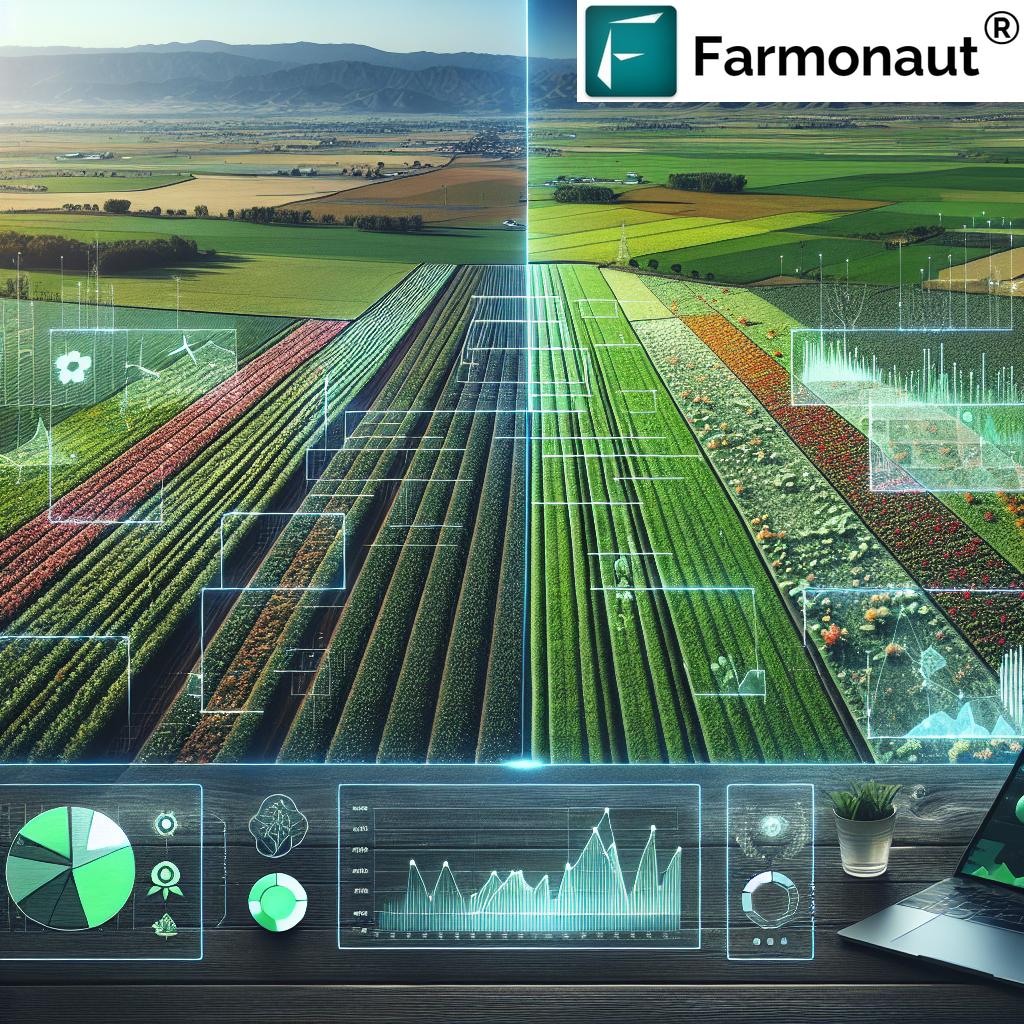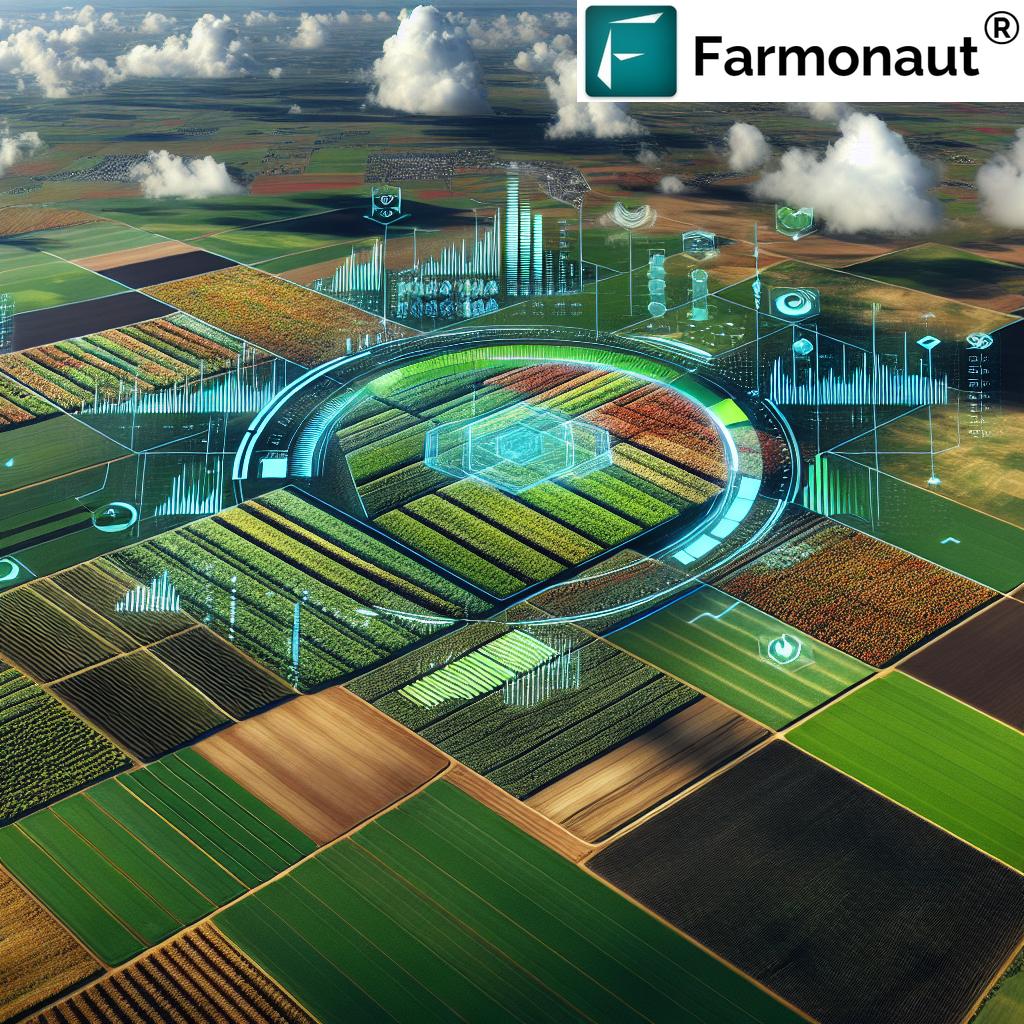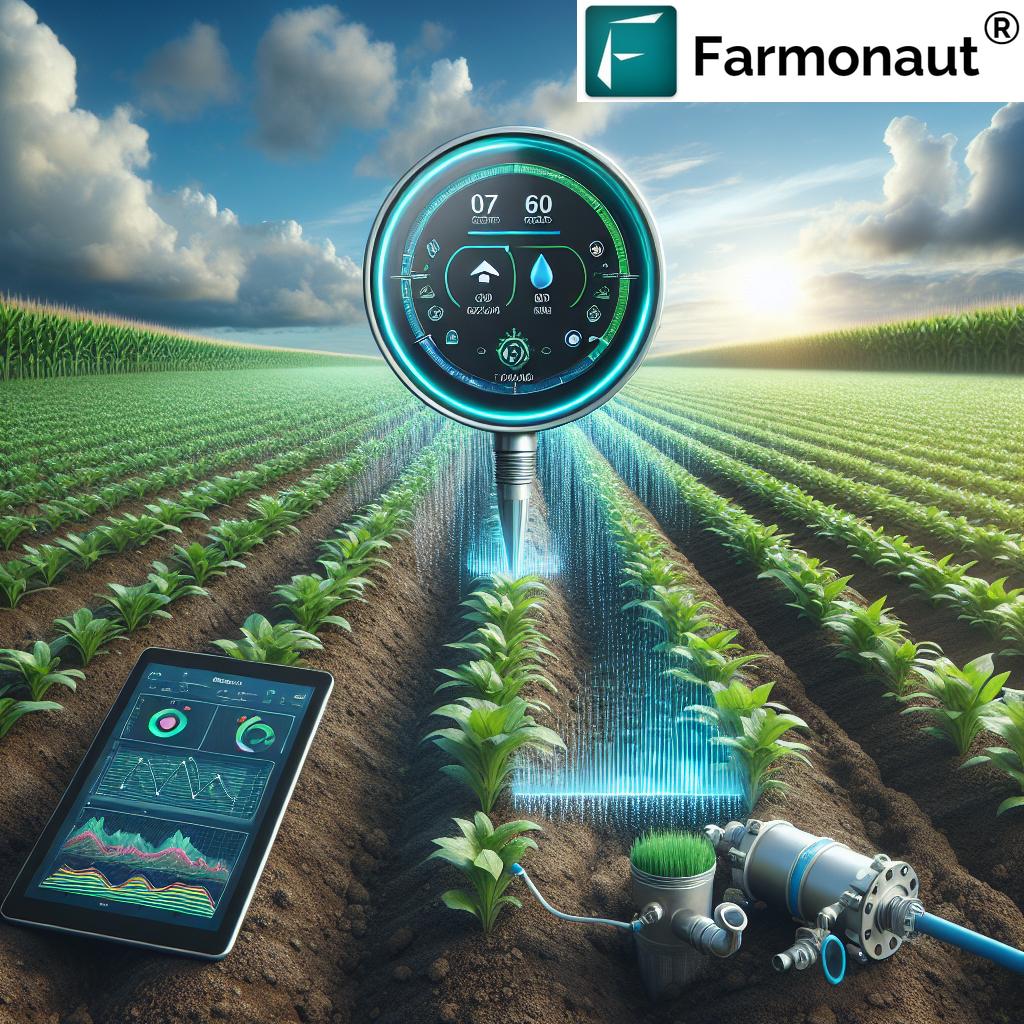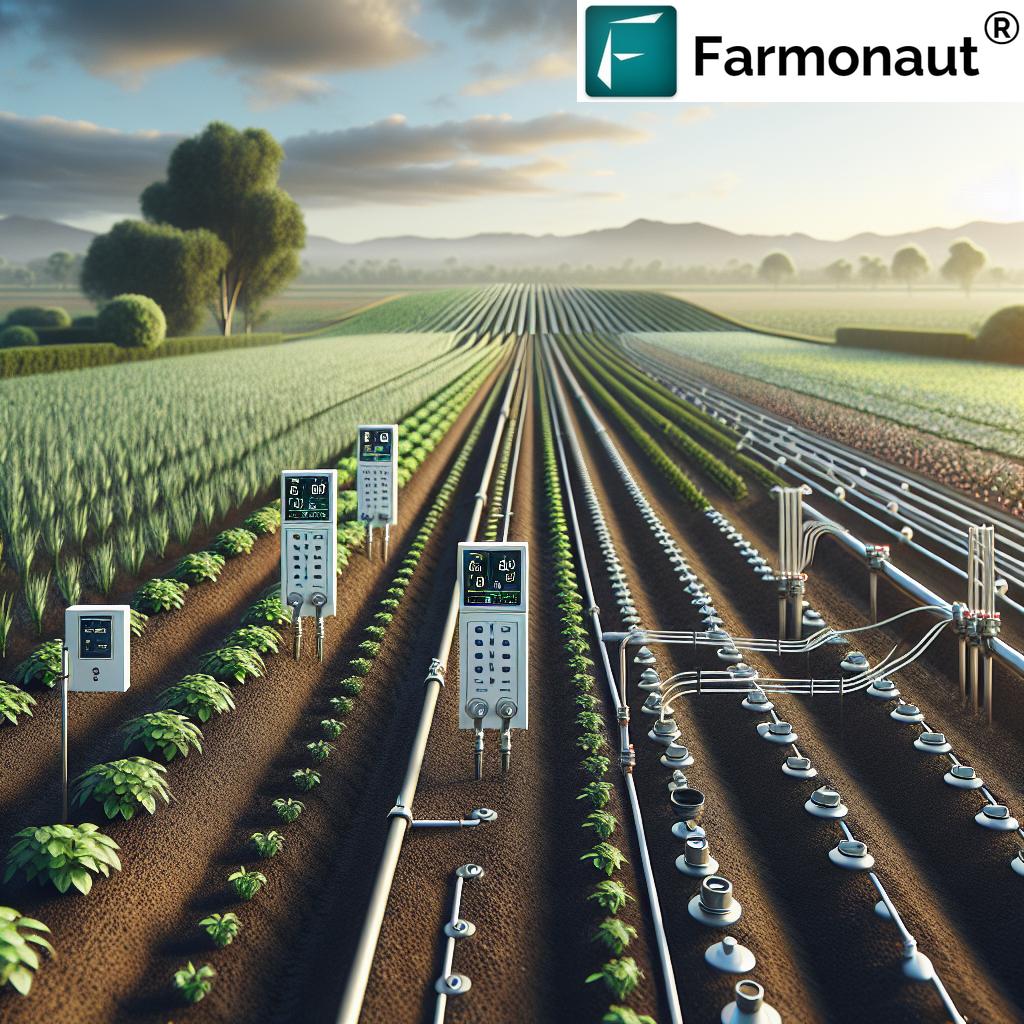Agriculture Drone Secrets: 7 Hacks to Double Your Yield!
Table of Contents
- Introduction to Agricultural Drones
- Agriculture Drone Secrets: 7 Hacks to Double Your Yield
- Key Applications of Drones in Agriculture
- Farmonaut: Empowering Farmers with Modern Technology
- Comparison: Conventional vs Drone-Assisted Farming
- Overcoming Challenges of Drone Adoption in Agriculture
- Future Outlook: Where Are Agricultural Drones Heading?
- FAQ
- Conclusion: Harnessing Drone Power in Agriculture
- Farmonaut Subscription Plans
Introduction to Agricultural Drones
The agricultural sector has undergone a technological revolution with the rapid adoption of agricultural drones—unmanned aerial vehicles (UAVs) designed to enhance farming efficiency, boost crop health, and enable data-driven management. These aerial devices, equipped with advanced sensors and imaging technologies, are redefining how we, as farmers and agribusiness leaders, monitor and manage our lands.
By leveraging multispectral cameras, powerful data analytics, and innovative management platforms, drone technology in agriculture transforms day-to-day practices: from assessing crop health and detecting pest infestations to optimizing irrigation schedules and minimizing resource wastage.
We’re witnessing the democratization of high-end precision farming solutions—making them more affordable, accessible, and sustainable for modern farms of every scale. In today’s blog, we’ll unlock “Agriculture Drone Secrets: 7 Hacks to Double Your Yield!”—practical strategies that will change the way you view farm management with drones.
Whether your focus is on maximizing yields, improving operational efficiency, or embracing sustainable practices, we invite you to explore how drone technology in agriculture can turn these goals into reality.
Agriculture Drone Secrets: 7 Hacks to Double Your Yield
Modern agriculture is no longer just about seeds and soil—it’s about integrating technology to maximize results. Let’s dive into the seven practical hacks that harness the full power of agricultural drones for yield optimization:
-
1. Leverage Multispectral Imaging for Real-Time Crop Health Assessment
We can use multispectral and RGB cameras mounted on drones to capture high-resolution images across entire fields. These images aren’t just pictures—they hold critical information for crop monitoring with drones, allowing us to assess plant health, spot disease outbreaks, and quickly detect pest infestations even before visible symptoms appear.
By employing indices such as the Normalized Difference Vegetation Index (NDVI), we can evaluate vegetation health, crop vigor, and stress levels. This means timely interventions, reduced losses, and, ultimately, doubled yield potential.
-
2. Implement Targeted Spraying and Seeding for Maximum Efficiency
Precision is key! Drone-assisted spraying enables us to apply fertilizers, pesticides, and herbicides exactly where needed, minimizing chemical usage and reducing environmental impact. The results? Significant input savings and improved crop health.
For those exploring seeding drones, the ability to distribute seed with exact placement removes guesswork and ensures even germination—accelerating uniform crop emergence and growth.
-
3. Automate Soil Analysis & Irrigation Management
By analyzing soil moisture levels and texture through drone-based sensors, we can optimize irrigation schedules. This practice ensures efficient water use for both smallholder and large-scale farms—promoting sustainable farming while conserving a precious resource.
Efficient data collection on soil properties empowers us to identify areas prone to drought or overwatering, ensuring every drop counts. (Interested in automating large farm operations? Explore our Large-Scale Farm Management solutions.)
-
4. Rapid Disaster Management and Damage Assessment
After natural disasters like floods or droughts, time is of the essence. Drones enable aerial surveys for quick damage assessment. This rapid data collection supports relief efforts, guiding us in recovery planning and minimizing crop losses.
With advanced imaging and geolocation, we can prioritize interventions, assess insurance claims, and speed up post-disaster return to productivity.
-
5. Integrate Livestock Monitoring Drones for Proactive Animal Health
Beyond crops, livestock monitoring drones equipped with thermal imaging sensors allow us to track animal movement, detect health anomalies, and safeguard our herds. This is particularly valuable for large ranches or grazing areas that are difficult to manage manually.
Early detection means healthier animals and optimized feed and veterinary interventions. (Interested in tracking and managing your fleet more efficiently? Check out our Fleet Management tools.)
-
6. Enhance Farm Management and Resource Allocation with Data-Driven Insights
Agricultural drones are not standalone gadgets—they’re essential inputs for farm management with drones. With the integration of drone-collected high-resolution data, we gain real-time visibility of our farm conditions, soil health, and resource allocation needs.
When combined with AI-driven platforms like Farmonaut, this information translates into actionable insights, smarter scheduling, and enhanced overall operational efficiency.
-
7. Adopt Drone-Based Carbon Footprinting and Sustainable Practices
As sustainability becomes a global imperative, modern farms need to monitor and reduce their environmental footprint. Through drone-enabled data, we can track emissions, map field carbon footprints, and demonstrate compliance with environmental regulations.
Farmonaut’s Carbon Footprinting services help businesses monitor emissions in real-time and make adjustments for long-term sustainability.
Key Applications of Drones in Agriculture
- Crop Monitoring and Drone Crop Health Assessment
- Advanced imaging (multispectral, RGB) enables early detection of diseases, pest infestations, and nutrient deficiencies.
- Indices like NDVI help us evaluate plant vigour, stress, and make timely interventions to enhance yields.
- Precision Spraying and Seeding
- Drones perform targeted application of fertilizers, pesticides, and herbicides, reducing usage and environmental impact.
- Improved precision leads to substantial cost savings and higher yield reliability.
- Soil Analysis and Irrigation Management
- Drones analyze soil properties and monitor moisture levels to optimize irrigation schedules.
- This promotes better water use and supports sustainable practices.
- Disaster Management and Rapid Damage Assessment
- Following natural disasters, drones provide swift aerial surveys and facilitate targeted relief efforts.
- Livestock Monitoring with Drones
- Thermal imaging and tracking allow better health monitoring and management of herds, especially across large or remote fields.
Farmonaut: Empowering Farmers with Modern Technology
As drone adoption accelerates, so does the need for integrated farm management systems that optimize data collection and decision-making. Farmonaut leads this innovation by bringing real-time satellite-based crop health monitoring and AI-driven advisory solutions to your fingertips.
How Farmonaut Complements Drone Technology in Agriculture
- Satellite-Based Monitoring & NDVI Index: No need for expensive hardware—Farmonaut’s satellite multispectral imaging delivers NDVI and other vital indices, helping us monitor crop health and make informed decisions on irrigation and fertilization anytime, anywhere.
- AI-Powered Jeevn Advisory: Get personalized farm insights, weather forecasts, and proactive crop management strategies. Our Jeevn AI system analyzes satellite data and turns it into actionable advice—boosting productivity and decreasing risks.
- Blockchain Traceability: Build market trust with Farmonaut’s traceability solution. Record and verify every step in your product’s journey from farm to shelf—ensuring authenticity and transparency.
- Fleet & Resource Management: Manage logistics and equipment with ease. Farmonaut’s fleet management tools improve operational efficiency, reduce costs, and optimize resource use.
- Satellite-Based Crop Loan & Insurance Support: Simplify loan approvals and insurance claims with satellite data for verification—providing peace of mind and financial stability for our farming community.
Access Farmonaut Anytime—Multi-Device Convenience
Farmonaut’s tools aren’t limited by your location—access real-time insights and manage your entire farm from any device:
For Developers and Agritech Innovators
- Integrate Farmonaut Data via API: Harness powerful satellite and weather data for your platforms. Farmonaut API
- Read API Developer Docs: Get started with detailed instructions on integrating satellite-based services. Farmonaut API Developer Docs
Key Farmonaut Services: Streamline and Future-Proof Your Farm
- Carbon Footprinting for emissions monitoring and environmental compliance: Learn More
- Product Traceability for transparent farm-to-market supply chains: Learn More
- Crop Loan & Insurance backed by satellite data for credible, quick financing: Learn More
Comparison Table: Conventional Farming vs. Drone-Assisted Farming
| Farming Practice | Estimated Yield Increase (%) | Input Cost Savings (%) | Area Covered per Day (Hectares) | Data Accuracy (%) | Crop Health Monitoring Frequency (per season) |
|---|---|---|---|---|---|
| Conventional Farming | 0-5 | 0-3 | 10-12 | 80-85 | 2-3 |
| Drone-Assisted Farming | 10-25 | 15-35 | 120-150 | 95-98 | 8-12 |
As this comparative table highlights, the integration of drone technology in agriculture delivers substantial yield increases, cost savings, and improved data accuracy versus traditional methods.
Overcoming Challenges of Drone Adoption in Agriculture
While the benefits of agricultural drones are compelling, several challenges—technological, financial, and regulatory—must be addressed for broad-based adoption:
- High Initial Investment: The upfront cost for drone hardware and training can deter smaller farms. Farmonaut solves this by offering satellite-based crop health monitoring—giving you many benefits of drones without the capital expenditure.
- Regulatory Restrictions & Frameworks: Operating drones requires compliance with stringent regulatory environments and licensing requirements in many regions. Farmers must stay vigilant about airspace restrictions and always operate legally.
- Technological Limitations: Common constraints include limited battery life, payload capacity, and susceptibility to adverse weather. It’s crucial to select suitable drone models and supplement operations with satellite data when required.
- Data Management & Integration: The massive volumes of data generated require streamlined storage, processing, and integration with existing farm management systems. Farmonaut’s platform is built for seamless integration and easy interpretation by farmers and agribusinesses.
- Data Privacy and Security Issues: As farms become more connected, concerns over unauthorized access or misuse of detailed field data arise. Ensure secure platforms like Farmonaut, which incorporates blockchain-based traceability for added data integrity and security.
Future Outlook: Where Are Agricultural Drones Heading?
The agricultural drone market is set for explosive growth—anticipated to reach $5.08 billion by 2030 with a compound annual growth rate of 16% between 2025 and 2030. Increasing adoption is propelled by demonstrable ROI, urgent needs for automation, and the demand for advanced data-driven decision-making.
As drone and satellite technologies converge, we anticipate improvements in payload capacities, battery life, imaging resolution, and AI-based analysis. Regulatory frameworks will continue to evolve, creating more transparent and secure environments for both pilots and farmers.
Ongoing investment in R&D, farmer education, and robust support infrastructures—like those delivered by Farmonaut—will ensure that both large and small growers can benefit from the revolution.
In summary, by addressing challenges of drone adoption in agriculture and embracing these advancements, we set the foundation for resilient, highly productive, and sustainable agricultural systems worldwide.
Frequently Asked Questions
How do agricultural drones improve crop yields?
Agricultural drones enable precise crop health assessment, early detection of diseases and pest infestations, and targeted input applications. By providing accurate, real-time data, they help us optimize every aspect of farming, boosting productivity and yield potential significantly.
What is the difference between satellite-based monitoring and drone-based monitoring?
Satellite-based monitoring (as offered by Farmonaut) covers vast areas at a lower cost and requires no on-site equipment. Drones offer ultra-high resolution data, ideal for targeted field sections, but may be limited by area, battery life, and regulations. Together, they provide robust crop monitoring solutions.
Are agricultural drones cost-effective for smallholder farms?
The high initial investment can be challenging for smallholders. However, Farmonaut’s satellite-powered solutions provide similar insights at a fraction of the cost, making precision agriculture accessible and affordable for all farms.
What are the main regulatory challenges for drone use in agriculture?
The primary regulatory challenges include airspace restrictions, licensing, and operational safety standards. It’s essential for farmers to stay updated on local laws to avoid penalties and ensure safe operation.
How does Farmonaut support sustainability in agriculture?
By providing real-time data on crop health, resource usage, and carbon emissions, Farmonaut enables decisions that reduce waste, conserve water, and lower environmental impact—resulting in both profitability and sustainable farming.
Conclusion: Harnessing Drone Power in Agriculture
Agricultural drones have firmly established themselves as indispensable tools for modern farming. From efficient crop health monitoring and precise input application to disaster management and sustainability tracking, the benefits are wide-ranging:
- Enhanced productivity through timely, data-driven decisions
- Significant cost and resource savings
- Improved crop yields and operational efficiency
- Advanced sustainability and environmental responsibility
- Scalable solutions suitable for farms of all sizes
By overcoming existing challenges and embracing technological advancements—from drones to satellite-based solutions—we can secure a future where food production is robust, sustainable, and rewarding for everyone involved.
If you’re ready to transform your farm with precision agriculture at an affordable cost, explore Farmonaut’s suite of tools today and step into the future of data-driven, sustainable farming!
Farmonaut Subscription Plans














